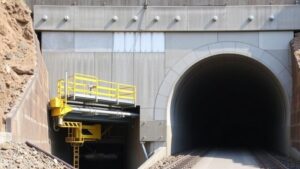How to Identify and Collect Sample Gravel From River Erosion Zones
How to Identify and Collect Sample Gravel From River Erosion Zones
Understanding how to identify and collect gravel samples from river erosion zones is crucial for various fields including geology, environmental science, and civil engineering. Gravel sampling helps to analyze sediment transport, assess habitat quality, and evaluate construction material suitability. This article provides a comprehensive guide on the steps involved in identifying and collecting these samples effectively.
Understanding River Erosion Zones
River erosion zones are areas where the force of flowing water actively removes soil and sediment, shaping the riverbanks and adjacent land. key features of erosion zones include:
- High-velocity flow: Fast-moving water can carry larger particles, altering the composition of gravel deposits.
- Under-cut banks: Areas where the riverbank is eroded beneath the surface, leading to unstable sediment.
- Point bars: Accumulations of gravel formed on the inside bends of rivers, often rich in diverse sediment.
Identifying these zones requires observing the rivers behavior and the characteristics of the surrounding environment. Geomorphic processes and the flow dynamics play an essential role in this identification.
Identifying Gravel Samples
When surveying a river for gravel samples, specific characteristics should be assessed. This includes particle size, shape, and mineral composition. following criteria can help in identifying quality gravel:
- Particle Size: Gravel typically ranges from 2 mm to 64 mm in diameter. Use a mesh sieve to classify particle sizes.
- Shape: Well-rounded particles indicate long transport distances by water, while angular particles may suggest recent erosion.
- Color and Composition: Different mineral compositions can give insights into geological history. Observe the colors and types of minerals present.
In a study conducted by the U.S. Geological Survey (USGS), it was demonstrated that the mineralogy of gravel can significantly influence aquatic ecosystems. For example, gravel with higher amounts of quartz typically supports diverse fish species.
Collecting Gravel Samples
Once suitable sites are identified, the collection process can begin. Here are the steps to follow:
- Gather Necessary Equipment: You will need a shovel, trowel, buckets, measuring tape, sieves, and safety gear.
- Choose Sampling Locations: Focus on zones where erosion is evident and where varied sediment sizes are present.
- Collect Samples: Use a trowel to dig into the sediment, ensuring samples are collected from various depths and distances from the bank. Fill buckets with collected gravel.
- Label Your Samples: Clearly label each sample with location, depth, and date of collection for proper documentation and analysis.
In environmental studies, collecting gravel samples from different river sections can help establish sediment transport rates, which can inform ecological management plans. A case study in the Colorado River revealed that sediment sampling contributed to rehabilitating the rivers habitat while preserving the local ecosystem.
Best Practices and Considerations
Several best practices can enhance the effectiveness and sustainability of gravel sampling:
- Permits: Always ensure you have the necessary permits for sampling, particularly in protected areas.
- Minimize Impact: Aim to collect samples in a way that minimizes disruption to the river ecosystem and surrounding areas.
- Sample Size: Collect a sufficient volume of gravel that accurately represents the site while avoiding over-sampling.
Conclusion
Identifying and collecting gravel from river erosion zones involves a systematic approach that combines observation and practical sampling techniques. By leveraging this knowledge, professionals in geology, environmental science, and related fields can gain valuable insights into river dynamics and sediment management. As you delve into your next gravel sampling endeavor, remember to adhere to best practices and consider the ecological implications of your work.
Actionable Takeaways:
- Familiarize yourself with the physical characteristics of river erosion zones.
- Equip yourself with appropriate gear and permits for collection.
- Document your findings meticulously for future reference and analysis.
